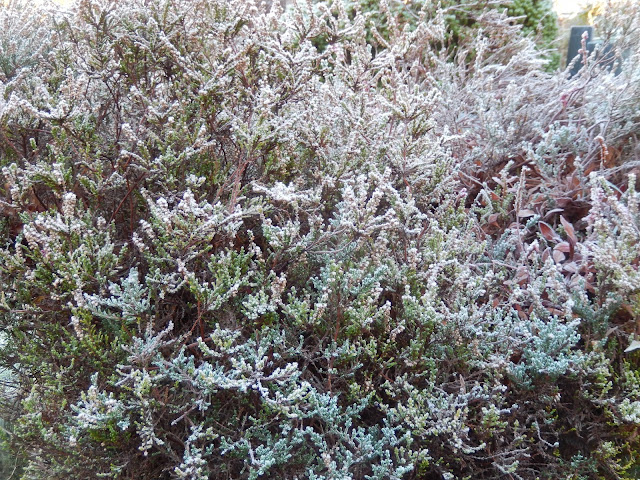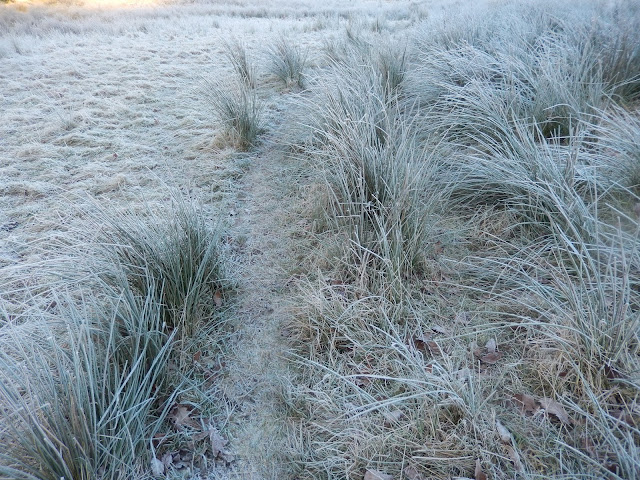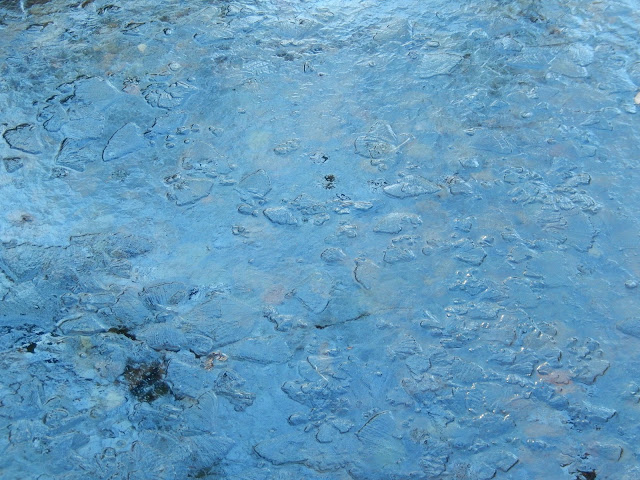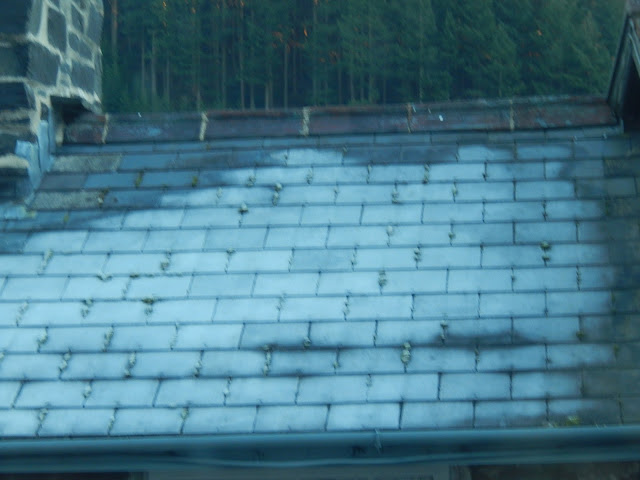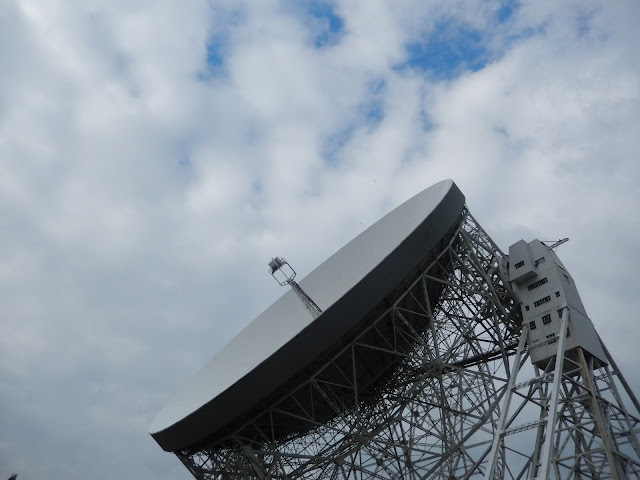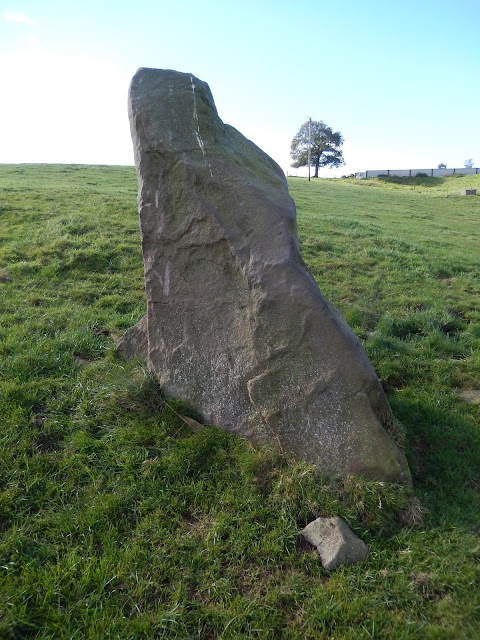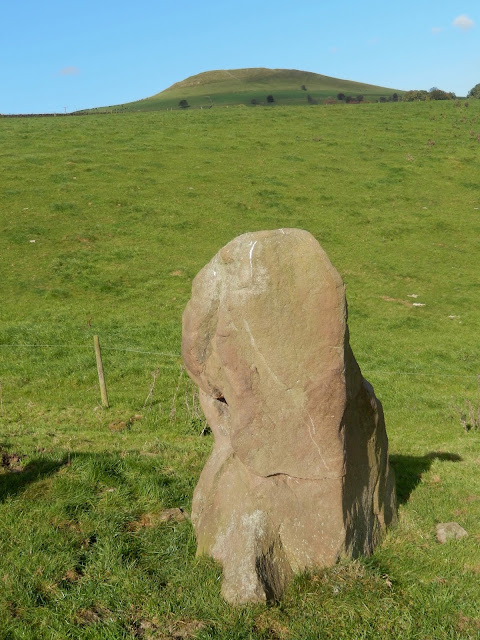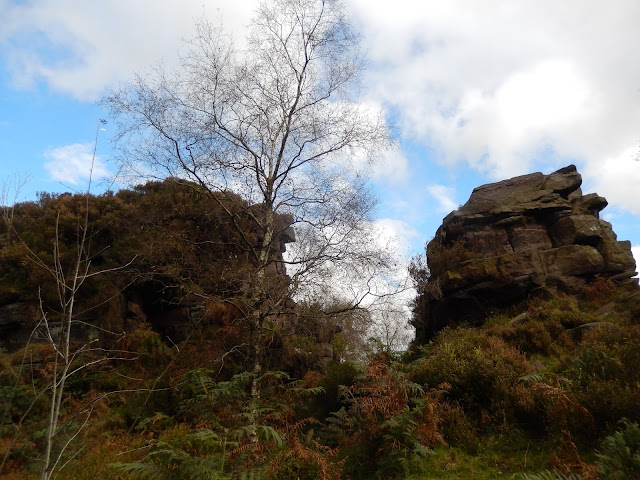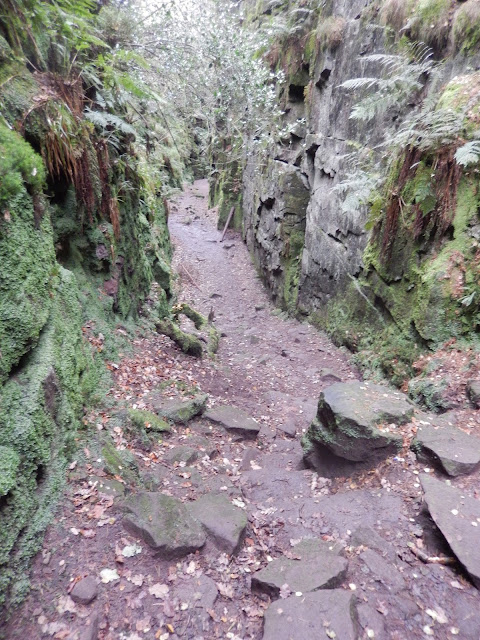Helo Pawb
As mentioned last year in my posting about Ynys Y Fydlyn, I learnt about its existence from my friend Grevel Lindop, who told me it was likely the last holdout of druids during the Battle for Ynys Môn. I felt a special connection to the site because of this history and decided to visit it again, even though I had not yet worked out a way to use it in my novel.
After 30 minutes of driving, I threw on my hiking boots, jacket and backpack and headed down the gravel path I had missed on my first visit. A short walk later, past gorse and bracken covered outcrops, through the smell of soft cowpats, and past the small lake at the back of the beach that is almost dried up at this time of year, I landed on the shingle beach of Ynys Y Fydlyn.
 |
| Bracken and gorse alongside the trail |
 |
| The dried-up lake and the slopes of dead bracken |
 |
| First view of Ynys Y Fydlyn |
As I wasn’t sure about the tide, I climbed along the rocks and slimy seaweed at the base of the eastern half of the island, which is no longer connected to the western half, and made my way to the westernmost point of the island. No wildflowers greeted me, as they did the previous visit, only soft, deep, hair grass and rocks stained and covered with pale green moss.
 |
| Part of the path across the top of the island |
Below me was a rocky outcrop just above sea level, which I imagined would have seen druids and their supporters scrambling into the small willow-framed and horse- or bullock-hide covered small craft called cwrwgls (from which we get ‘coracle’) as they try to escape the approaching Roman soldiers.
 |
| The outcrop at the end of the western half of Ynys Y Fydlyn |
Not long after I arrived, I looked to the north, from where a bitter wind was blowing, and noticed rain clouds developing. I hoped they might indicate a shower only. I was wrong. I dragged on my waterproof overpants and tried to wait out the rain, but it kept swirling around me with no let up. I left for the eastern section, as I knew there was an outcrop that might provide shelter. It did, so I sat out the storm and, when it eased, ate my lunch and meditated for a while. At one point, 20 or more pheasants burst out of the gorse and bracken at the top of the promontory opposite me and dropped down into the bushes at the base. There appeared to be no reason for this apparent panic, but I imagine a predator of some sort had spooked them.
 |
| View westward, from the inner isle, showing the inlet and the two island sections |
My meditations and my explorations around site itself had prompted ideas, which I duly wrote down in my small notebook. As the tide started to turn I thought it time to head back home. However, when I reached the beach and double-checked my pockets, I realised I had dropped my small pouch with crystals and stones gathered from various places. I rushed back to the western section and found it where I had put on my overpants.
 |
| Tide flow across the inlet |
 |
| Another of my colour and texture photos |
As the tide wasn’t coming in that quickly, I stayed awhile and mused some more on the possible scene in the sixth century when the Romans stormed this last refuge of the druids. I wondered why the Celts had come here to launch themselves to Ierne (Ireland) or Ynys Manau (Isle of Man), when other places on Ynys Môn seemed closer to those destinations. I came up with some ideas, though they will need further thought before I use them in the book. What I can say is that if I flashback scene about the struggles at Ynys Y Fydlyn, I’ll set in a storm even more dramatic than the one I experienced, with the bellow and crash of waves on the rock below where the druids would be trying to launch their cwrwgls, while above them their warriors are fighting the Romans to their last breath.
 |
| Scene of past combat? |
After giving thanks to the spirits of the past and of the place itself, I scrambled back to the shingle beach and, with pheasants diving into bushes as I moved past, strolled back to my car.
 |
| Last view of Ynys Y Fydlyn. Compare the clouds to the photo up the page |
 |
| Odd arrangement of dragonflies on a fence post during my walk back |
As always, I welcome your comments. All the best to whatever projects are giving you bliss.
Cofion Cynnes
Earl


